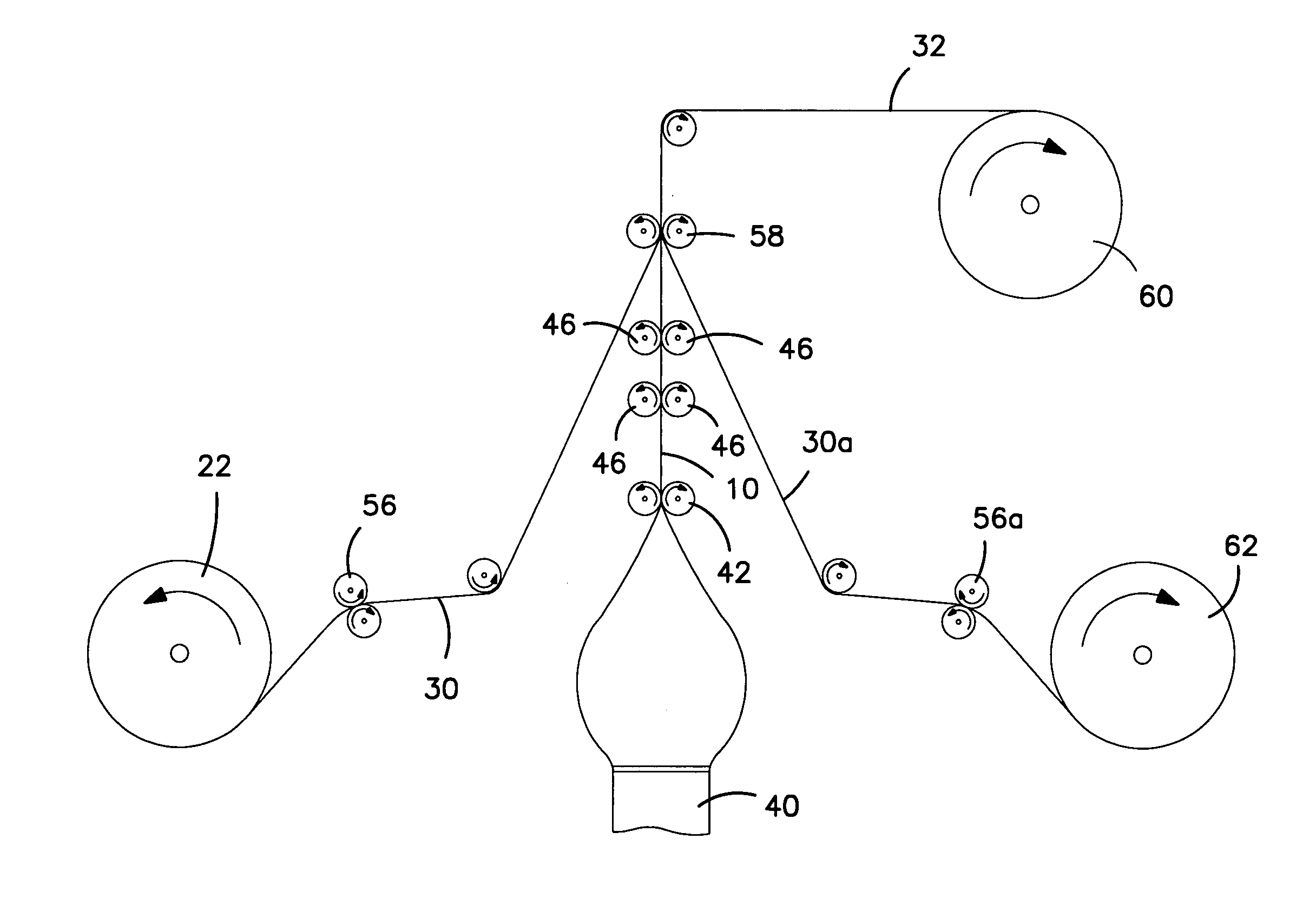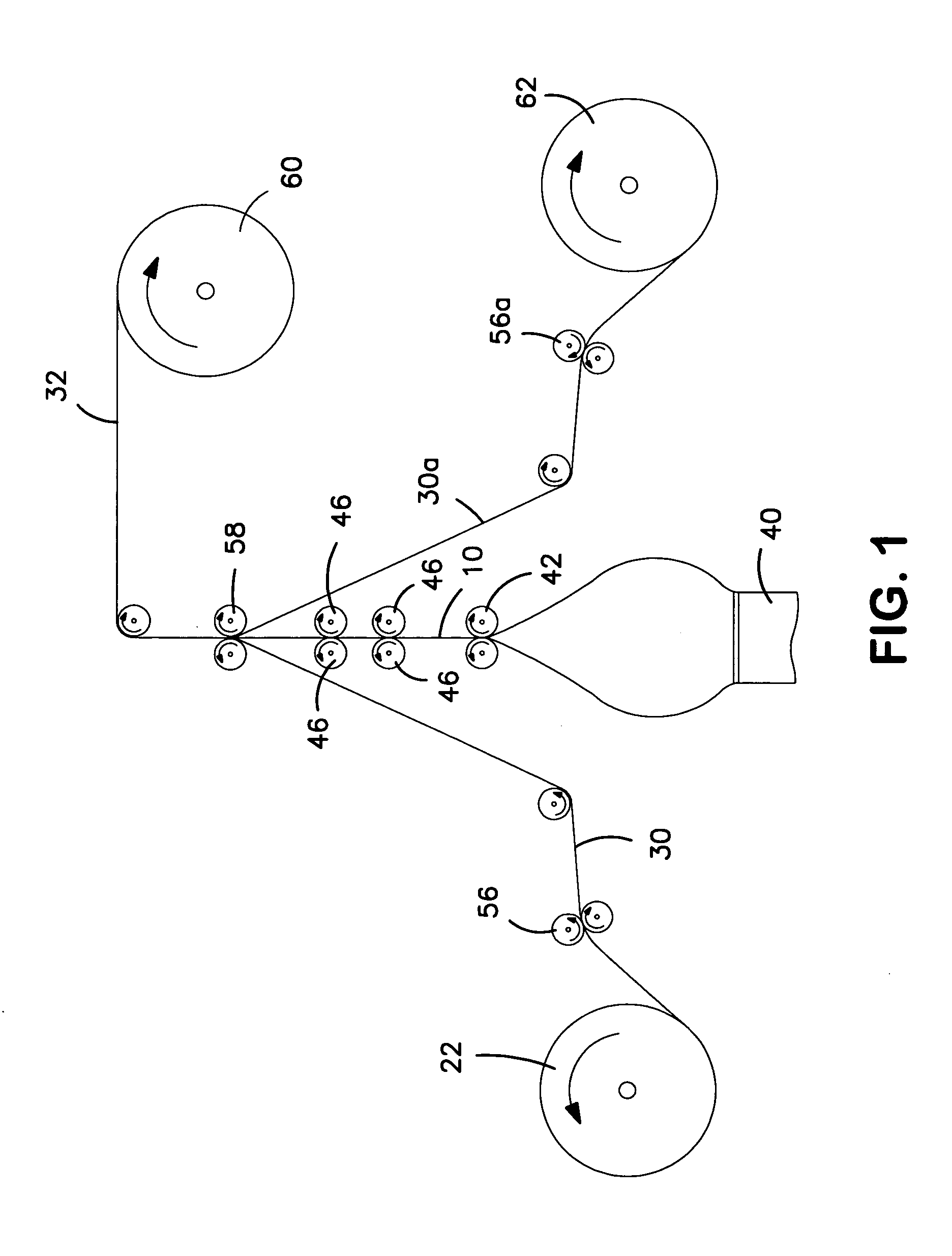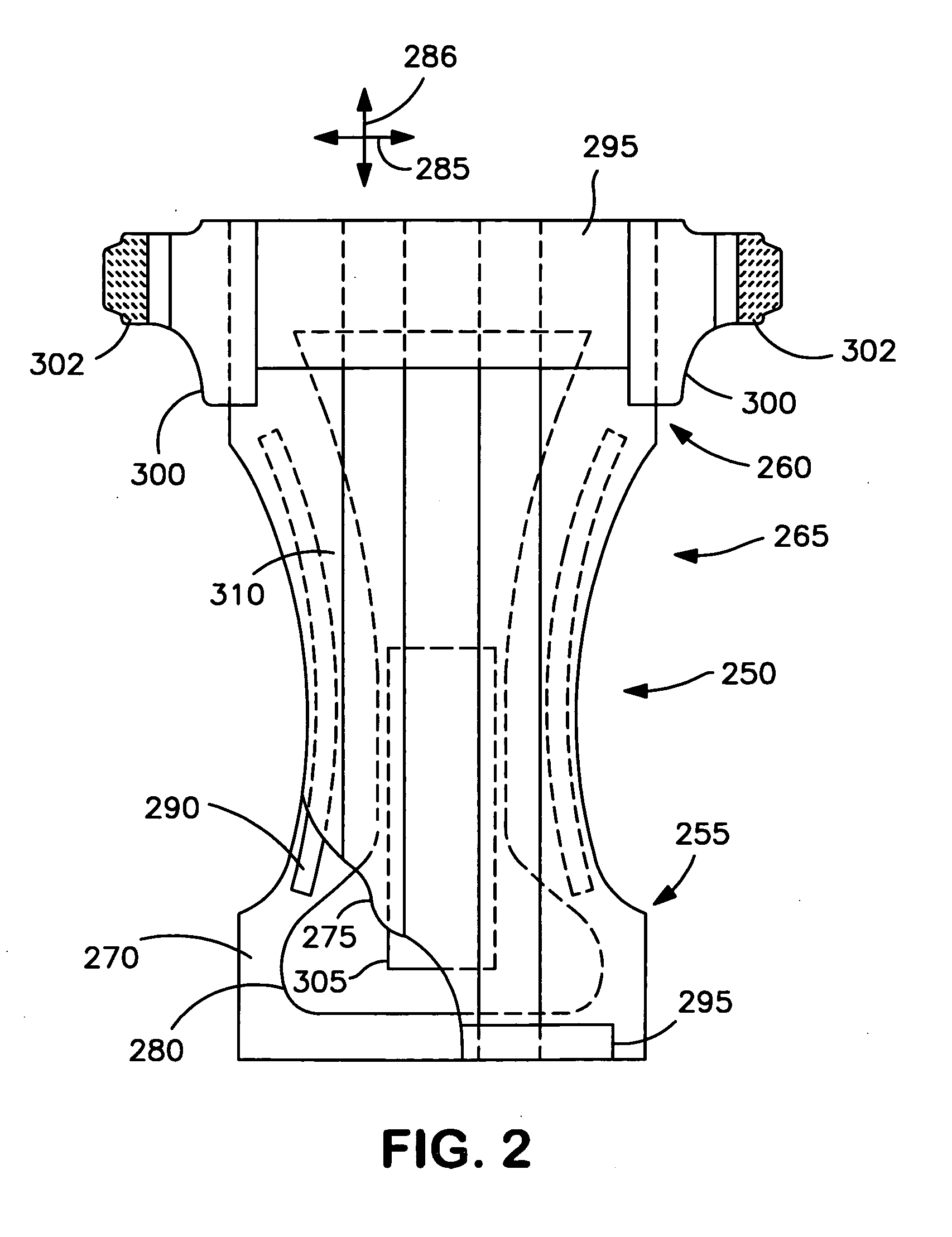Latent elastic nonwoven composite
a technology elastic articles, which is applied in the field of elastic nonwoven composites with elastic articles, can solve the problems of difficult to properly measure and position the desired quantity of elastic articles in the final product, and achieve the effect of increasing the stretchability
- Summary
- Abstract
- Description
- Claims
- Application Information
AI Technical Summary
Benefits of technology
Problems solved by technology
Method used
Image
Examples
example 1
[0079]A polymer blend was initially formed from 50 wt. % KRATON® MD6673 (Kraton Polymers, LLC of Houston Tex.) and 50 wt. % AFFINITY™ PL1280 (Dow Chemical Co. of Midland, Mich.). AFFINITYT™ PL1280 is a metallocene-catalyzed LLDPE having a density of 0.90 grams per cubic centimeter, a melting point of 96° C., and a melt index of 6.0 grams per 10 minutes (190° C., 2.16 kg). KRATON® MD6673 contains 68 wt. % of a styrene-ethylene-butylene-styrene block copolymer (KRATON® MD6937), 20 wt. % REGALREZ™ 1126 (Eastman Chemical) and 12 wt. % EPOLENE™ C-10 polyethylene wax (Eastman Chemical). The polymers were compounded by weighing appropriate portions of pellets of each polymer, combining them into one container, and mixing them together by stirring. After compounding, the film samples were extruded using a small scale single screw blown film line with a 1.75-inch extruder, air ring, 3-inch die, and collapsing tower, all manufactured by Killion. The extruder had three temperature zones and a ...
example 2
[0080]A film was formed as described in Example 1, except that it was stretched in the machine direction after quenching at a draw ratio of 3.0 (i.e., 3 times its original length). The stretching was performed between two sets of driven nips. The first nip ran at 50 feet per minute and the second nip ran at 150 feet per minute. The film was “cold drawn” in that no additional heat was supplied to the film during stretching. The screw speed was adjusted as needed to reach the desired final basis weight of 37 grams per square meter. Thereafter, the stretched film was allowed to relax to 1.5 times its original length by winding it up onto a take-up roll at 75 feet per minute. Upon testing, it was determined that the film had an “After Heated Retraction Length” (“AHRL”) of 55 and a percent set of 17.1% (cycle tested to 100% extension).
example 3
[0081]A polymer blend was initially formed from 50 wt. % KRATON® MD6673 (Kraton Polymers, LLC of Houston Tex.) and 50 wt. % EXACT™ 5361 (ExxonMobil Chemical Co.). EXACT™ 5361 is a metallocene-catalyzed polyethylene plastomer having a density of 0.86 grams per cubic centimeter, a melting point of 50° C., and a melt index of 3.0 grams per 10 minutes (190° C., 2.16 kg). The polymers were compounded by weighing appropriate portions of pellets of each polymer, combining them into one container, and mixing them together by stirring. After compounding, the film samples were extruded using a small scale single screw blown film line with a 1.75-inch extruder, air ring, 3-inch die, and collapsing tower, all manufactured by Killion. The extruder had three temperature zones and a die with a controlled temperature. The temperature profile was arranged so that a melt temperature of about 365° F. was achieved. After quenching from the air ring and collapsing the bubble (collapsing nip was run at a...
PUM
| Property | Measurement | Unit |
|---|---|---|
| temperature | aaaaa | aaaaa |
| temperature | aaaaa | aaaaa |
| density | aaaaa | aaaaa |
Abstract
Description
Claims
Application Information
 Login to View More
Login to View More - R&D
- Intellectual Property
- Life Sciences
- Materials
- Tech Scout
- Unparalleled Data Quality
- Higher Quality Content
- 60% Fewer Hallucinations
Browse by: Latest US Patents, China's latest patents, Technical Efficacy Thesaurus, Application Domain, Technology Topic, Popular Technical Reports.
© 2025 PatSnap. All rights reserved.Legal|Privacy policy|Modern Slavery Act Transparency Statement|Sitemap|About US| Contact US: help@patsnap.com



